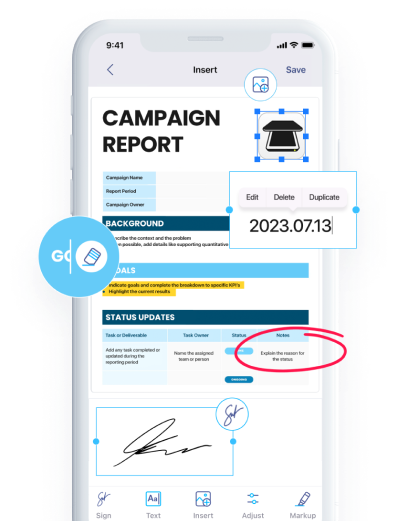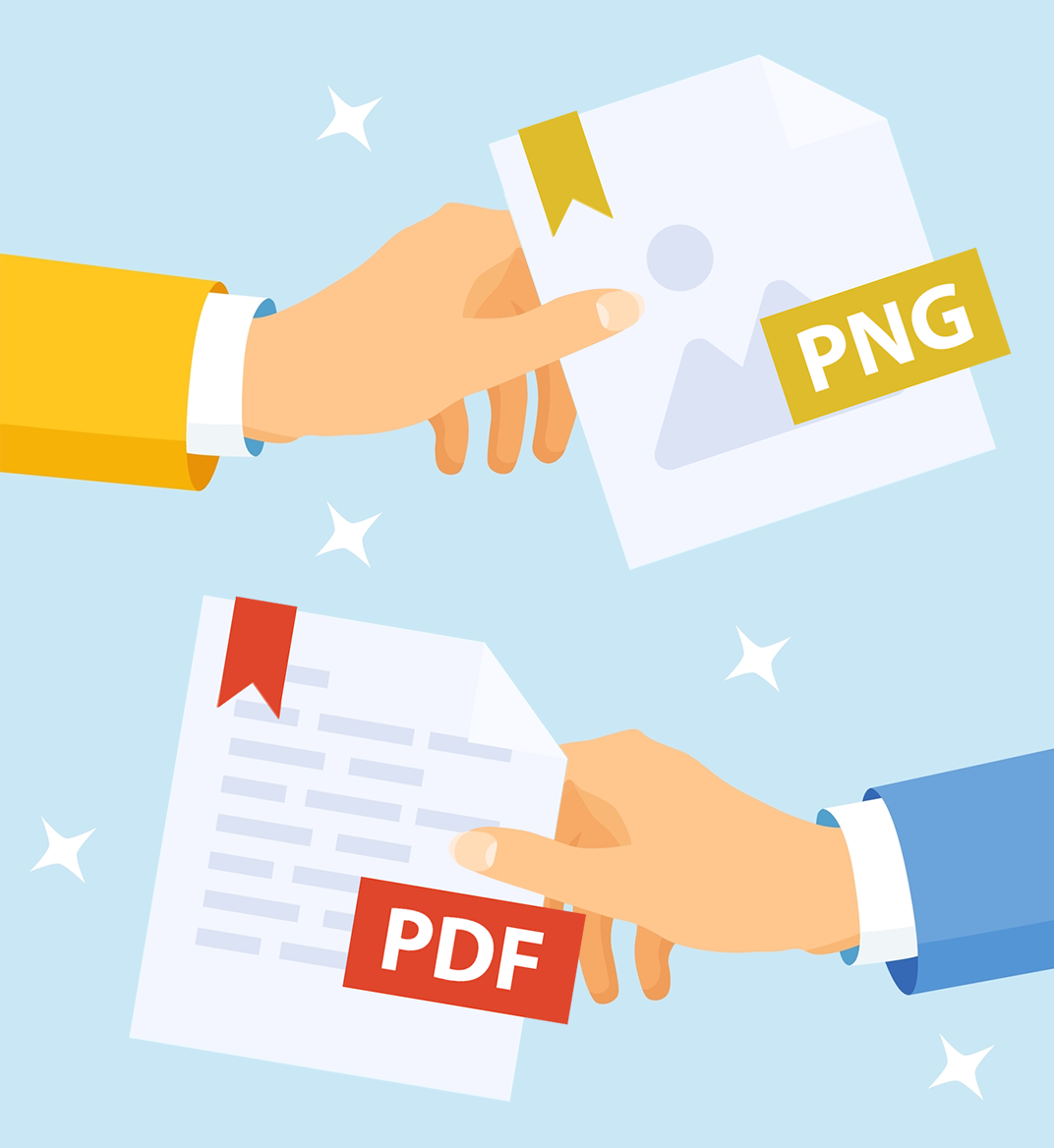

27 may 2025
How often do you find yourself in a situation where you wish you had a proper document instead of an image to work with? Every modern workplace emphasizes dynamic and productivity, and getting stuck with a less favorable file format doesn’t suit this characteristic. So, when being forced to work with images, specifically PNGs, you probably need them in a more universal, professional, compatible, and shareable format like PDF. Whether you’re organizing scanned documents, creating scalable image-based reports, or preparing a bunch of files for printing, it’s always a bright idea to convert PNG to PDF. In this article, we’ll go over the reasons for it and show you two simple yet effective conversion methods you can follow.

PNG is a popular and reputable image format. It’s best known for its lossless compression and the ability to preserve transparent backgrounds with excellent quality. Because of those clear benefits, PNG is perfect for design, screenshots, and web graphics. However, PNGs have their limitations, and there are quite a few of them. For instance, this image format isn’t ideal for printing, document management, or professional presentation. Simply put, PNGs are just images, meaning they lack the context, structure, and various additional features. These are also the reasons that make PDFs more versatile for everyday use.
Imagine you need to send multiple PNGs. Sending ten separate images in an email is clunky, potentially confusing, and simply unprofessional. Contrary to that approach, a single PDF can unify those images into one sleek, perfectly printable, and shareable document. Plus, unlike any image formats, PDFs are much easier to secure, annotate, and organize within larger digital workflows, meaning they’re more suitable for a professional landscape. Basically, if you value consistency, clarity, compatibility, and ease of use, converting PNG to PDF absolutely makes sense.

This is the quickest, most straightforward, and hassle-free approach for when you need a one-time conversion and don’t want to download anything. The instructions are as follows:
As you can see, the beauty of this method is its simplicity. The iScanner web converter is absolutely free to use. It doesn’t require registration and works across all major web browsers and devices. Additionally, it’s secure, user-friendly, and perfect for occasional conversions when speed is your top priority.
If your job or any side activity frequently revolves around dealing with documents, you may need a more powerful and versatile tool with conversion functionality. In this case, the iScanner app may actually be a better fit for your tasks. It’s also quite simple to use, and here’s what you’ll need to do if you choose to rely on the app:
Though it does require an initial download, the iScanner mobile app is more than just a converter. It’s a robust document management solution with all the tools you may need. The app allows you to scan, edit, organize, and share files on the go with far greater flexibility than online solutions.

At the end of the day, this is the question you’ll have to answer yourself. Ultimately, it depends on what you’re trying to accomplish, but there are several benefits that are pretty compelling and worth considering:
The benefits listed above may seem like a lot to digest. In short, knowing how to convert PNG to PDF and relying on this approach regularly is more than just a convenience. If your work involves images in any serious or repeated capacity, choosing a reliable conversion method is almost a necessity. Fortunately, tools like iScanner make this process seamless, so there’s no reason not to give it a try.
